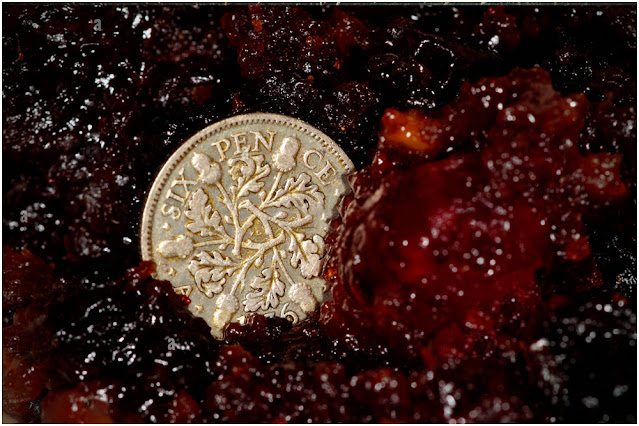Stir-up Sunday
Christmas Cake or Pudding, do you have a preference?
If you make either yourself, then traditionally today would be the day to set out at least making the mixture. For today is Stir-up Sunday. And across Lincolnshire, households would be checking the list of ingredients, and preparing bowls and a most importantly a spoon, for an important family ritual. County Folklore Vol V (1908) tells us...
" Stirrup-Sunday.— That is Stir-up Sunday. The last Sunday after the feast of Holy Trinity, so called, it is said, on account of the first words of the collect in the Book of Common Prayer for that day: ‘ Stir up, we beseech Thee, O Lord,’ which is a translation of a collect in the Salisbury use. On this day, or on the one following, the mince-meat for the Christmas pies, and the Christmas plum-pudding should be stirred by all members of the household.—-E. Peacock, IL, vol. ii., p. 525. "
The Christmas cake as we would recognise it appeared around the 16th Century. Earlier iterations, might have been something a bit lighter and more bread-like, for example something not too distant to the modern day Italian Panettone. The Christmas pudding alternatively originated in the 14th-century as a sort of porridge, originally known as “frumenty”, though earlier versions of this might include meat as well as fruit, so the resemblance may be slight!
It would be the Victorians who so ardently advanced much of the mythology and ritual around the Christmas season, who'd have the greatest impact on both the seasonal cake and pudding. Additions of ingredients of dried fruit such as raisins, currants, and lemon & orange peel, mixed spices, and brandy would see both recipes evolve into the items we would expect to see on our cracker be-decked tables today.
 |
| By the end of the 19th C, the holly-topped Christmas pudding had become one of the defining symbols of the season. Popularised by recipes books, and in advertising. But who would get the sixpence? |
The dropping of a lucky sixpence into the Christmas pudding mixture was a UK wide tradition, and would have been done in Lincolnshire kitchens. Where all the family would be called to gather around the bowl of sticky spiced-scented mixture and to take turns to silently stir in a "wish" to the mixture (remembering to stir clockwise)
I'm including here our family Christmas cake recipe. One that's stood us in good stead down the years. Using a dark beer such as a porter, produces a rich malty cake. We've used Wainfleet-based brewery, Bateman's Salem Porter to good effect before, but any dark or red ruby ale will work.
And don't forget to feed the mixture regularly!
Christmas Cake
55g 2oz mixed peel
450g/1lb raisins
285g/10oz sultanas
----------------------------



Comments
Post a Comment